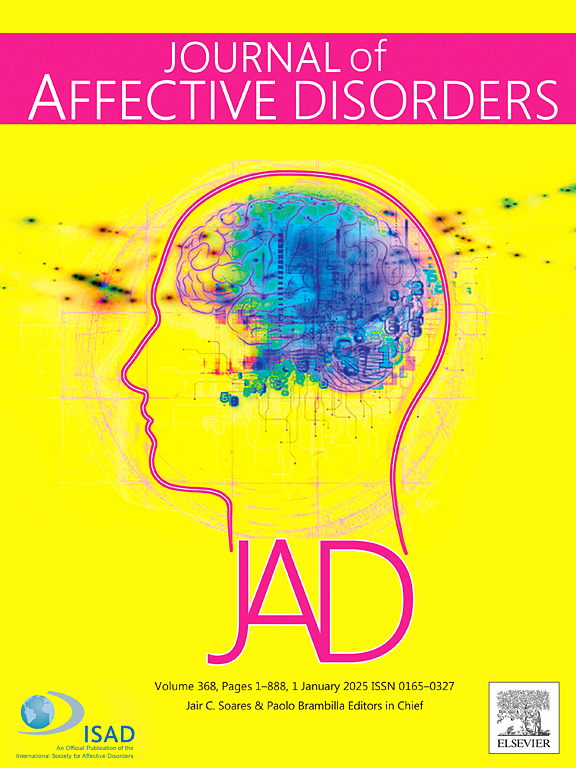Does the Edinburgh Postnatal Depression Scale (EPDS) identify antenatal depression and antenatal anxiety disorders? A validation study in Singapore
IF 4.9
2区 医学
Q1 CLINICAL NEUROLOGY
引用次数: 0
Abstract
Objective
Research on the usage of the Edinburgh Postnatal Depression Scale (EPDS) to detect common antenatal mental disorders in pregnant women attending outpatient clinics in Singapore is limited. This study aimed to investigate the psychometric properties of the EPDS in screening for antenatal depression (AND) and anxiety disorders.
Method
250 pregnant women from two national public obstetric clinics were included. The EPDS and EPDS-3A were validated against the Mini International Neuropsychiatric Interview (MINI) by analyzing key parameters at different cutoffs and obtaining the receiver operating characteristic analysis. Multivariable analysis was used to identify possible risk factors of AND.
Results
The prevalence of AND and anxiety disorders was 4.4 % and 3.3 %, respectively. The EPDS demonstrated strong psychometric performance in screening for both conditions, with an Area Under the Curve (AUC) of 0.927 for depression and 0.829 for anxiety. In contrast, the EPDS-3A was not recommended as a screening tool due to its relatively poor psychometric properties. For clinical applicability of AND screening using EPDS in a busy outpatient clinic, a cutoff >11 is recommended, followed by further assessment and tiered care based on needs. Being a member of minority ethnic group was the only risk factor identified for AND in our study population.
Conclusion
EPDS performs well in screening for antenatal depression and anxiety disorders; however, further assessment is important.
求助全文
约1分钟内获得全文
求助全文
来源期刊

Journal of affective disorders
医学-精神病学
CiteScore
10.90
自引率
6.10%
发文量
1319
审稿时长
9.3 weeks
期刊介绍:
The Journal of Affective Disorders publishes papers concerned with affective disorders in the widest sense: depression, mania, mood spectrum, emotions and personality, anxiety and stress. It is interdisciplinary and aims to bring together different approaches for a diverse readership. Top quality papers will be accepted dealing with any aspect of affective disorders, including neuroimaging, cognitive neurosciences, genetics, molecular biology, experimental and clinical neurosciences, pharmacology, neuroimmunoendocrinology, intervention and treatment trials.
 求助内容:
求助内容: 应助结果提醒方式:
应助结果提醒方式:


